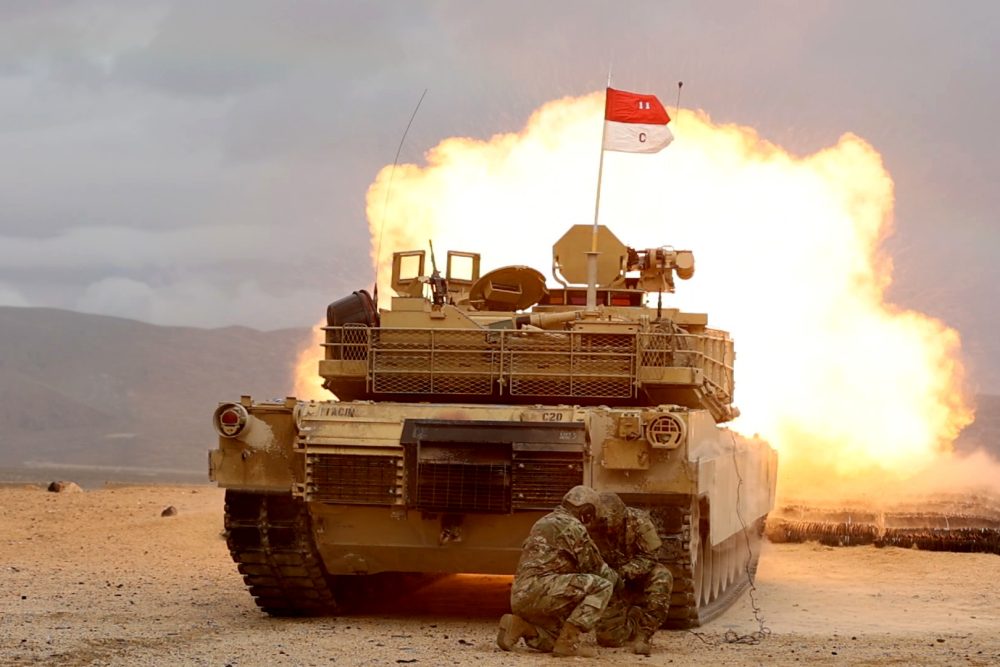WASHINGTON – In the more than two months since Russia invaded Ukraine, Russian President Vladimir Putin has repeatedly threatened the NATO alliance not to interfere.
Ignoring those warnings, the United States and its NATO allies have supplied Ukraine weapons and intelligence that have been used to great effect.
And in the background, policy makers and subject experts have questioned whether this conflict in Europe represents the beginning of a new Cold War. A central theme of the first Cold War was a race between the United States and NATO on one side and the then-Soviet Union on the other to compile the largest arsenal of weapons.
While war is not solely a game of numbers, having a numerical superiority in firepower is certainly an advantage. So how do the US and NATO forces stack up against those of Russia?
From a purely quantitative point of view – very well: in fact, by all measures Russia is outgunned by the western alliance.
Below, five numerical comparisons of military components of the United States, NATO and Russia are represented. The figures are best estimates based on available information. Numbers for the United States are shown both individually and included in the NATO totals.
MANPOWER
The infantry is often referred to as “the queen of battle” – a chess reference recognizing the influence of boots on the ground. But not every soldier is a rifleman; the majority fulfill support roles, making the mobilization of the infantry possible.
The manpower chart represents the total number of active duty personnel in the military of each force. The NATO alliance has more than three times the personnel Russia fields. The numbers do not factor in reserve or national guard members in each country.
ARMOR
A mainstay on the battlefield since World War I, main battle tanks have an imposing presence. Combining armor, a suite of weapons and mobility, they are a pillar of modern military strategy.
The tanks chart represents the total number of main battle tanks in each arsenal, combining the number of vehicles actively fielded and held in storage. Along with tanks, U.S., NATO and Russian forces each have hundreds of thousands of armored fighting vehicles, trucks and support vehicles.
SEA POWER
One of the main ways to project power in a foreign land, a navy allows a nation’s military to project force beyond its borders.
Aircraft carriers take this to the next level, greatly expanding the reach of sea power. While carriers are extremely visible, submarines operate below the waves in secret. And all are supported by a fleet of vessels ranging from destroyers to tankers carrying fuel.
The aircraft carrier numbers represent vessels meant to launch either airplanes or helicopters. Submarines come in three types: attack subs meant to target other vessels, subs that can launch conventional cruise missiles, and subs that serve as a mobile launch platform for nuclear warheads.
AIR POWER
Air superiority is a dominant factor in the outcome of a battle - and even a war, providing large and pinpoint firepower at a moment’s notice.
The absence of Russian air superiority in Ukraine since the invasion has been a hot topic in the news. That shortcoming has hampered Russia’s ability to achieve its early objectives. Russia still has not achieved dominance in the skies over Ukraine.
The combat aircraft chart shows the number of airplanes and helicopters used for combat. It does not include the transportation and fueling aircraft in the U.S., NATO and Russian fleets.
WEAPONS OF MASS DESTRUCTION
The scariest and most lethal weapons in any country's arsenal, nuclear warheads are considered the very last line of escalation in a conflict.
Aside from the two atomic bombs dropped on Japan by the United States at the end of World War II, nuclear weapons never have been used in subsequent conflicts.
With the capability to destroy entire cities within seconds, nuclear warheads primarily serve as a deterrent - a threat to the other side should they be contemplating a first strike.
The numbers in the nuclear warhead chart show how many warheads are in the U.S., NATO and Russian arsenals. Some warheads are mounted to delivery devices such as intercontinental ballistic missiles and conventional bombs; most are held in storage.
Only the United States, the United Kingdom and France possess nuclear weapons in the NATO alliance.
While those three nations currently only have the large, city-destroying weapons, Russia has both the high-yield warheads as well as low-yield warheads, which have a blast radius of a few hundred yards and are easily portable. Experts agree that low-yield devices lower the threshold for use, making their usage much more likely.
***
What is not revealed by displaying only the numbers is the technology behind the personnel and equipment.
The United States, NATO and Russia field updated versions of the weapons they deployed during the Cold War. These weapons were purpose-built to combat the other should a Cold War turn hot.
The numbers displayed in this article do not take into account the equipment Russia currently is losing in Ukraine. Estimates vary, but Russian personnel losses could be as high as 40,000 soldiers.
Ukraine is not a NATO member and while that nation has surprised the world with its fierce resistance to the Russian invasion, the current size and state of its military is not known.
Finland and Sweden have recently expressed their intent to join NATO in light of the Russian aggression in the region. Both countries are set to make their decisions this month, potentially adding their manpower and arsenals to the alliance’s tally. The move would expand NATO defenses along the Russian border.
Note: Research for this story is based on readily available public information from government and non-government, non-partisan organizations, as well as international sources and media reporting, including the Center for Strategic and International Studies, NATO and Flight International.

